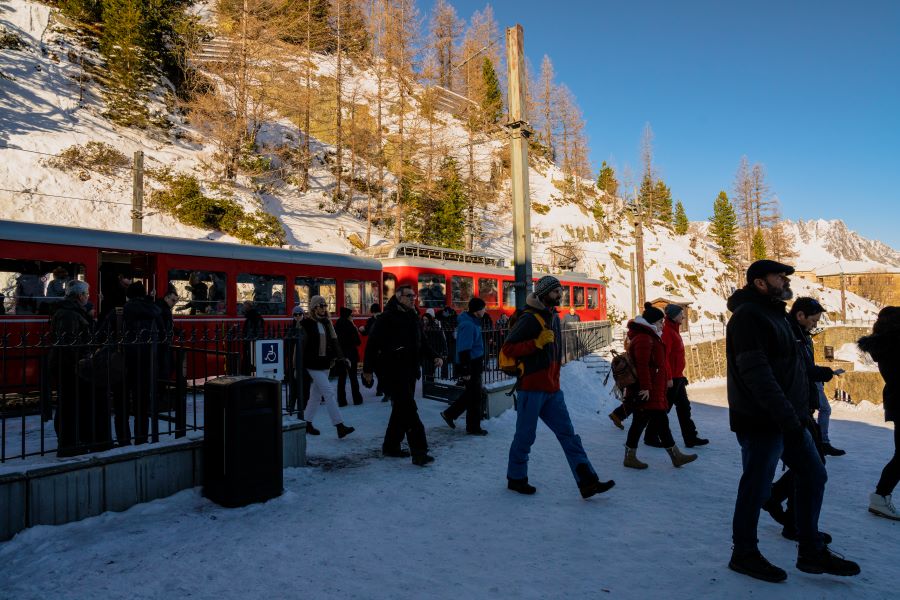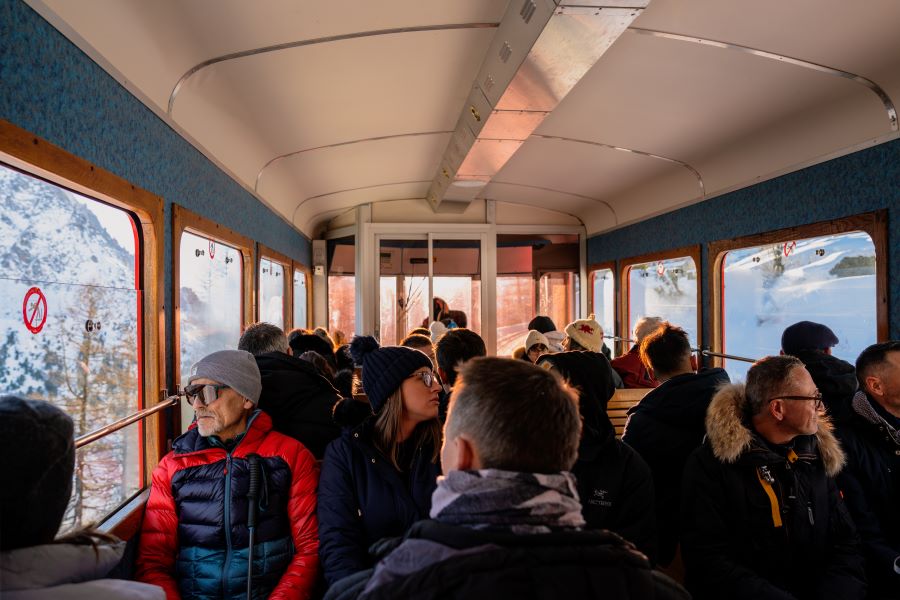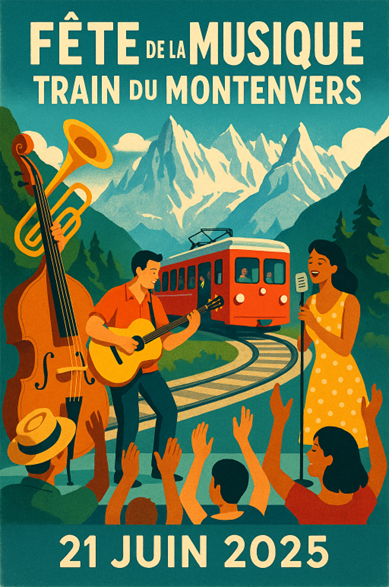The route of the Montenvers train
Length of track, journey time and gradient.
This is the length of the track between Chamonix station and Montenvers station
Difference in altitude between Chamonix station (Alt 1.042m) and Montenvers station (Alt 1.913m)
This is the travel time on board the train to connect the 2 stations
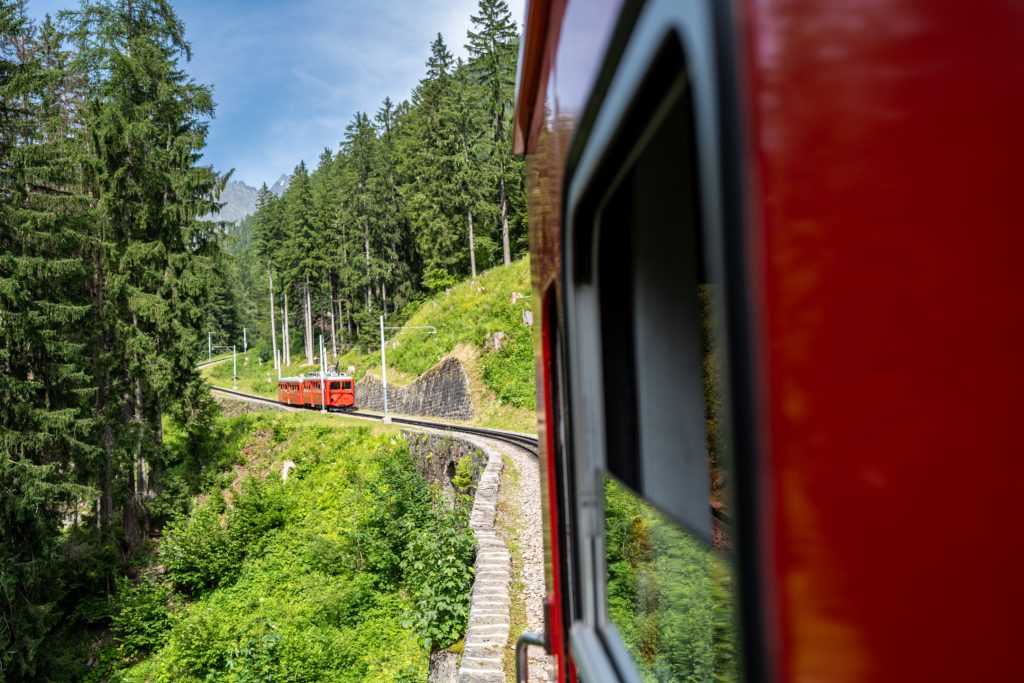
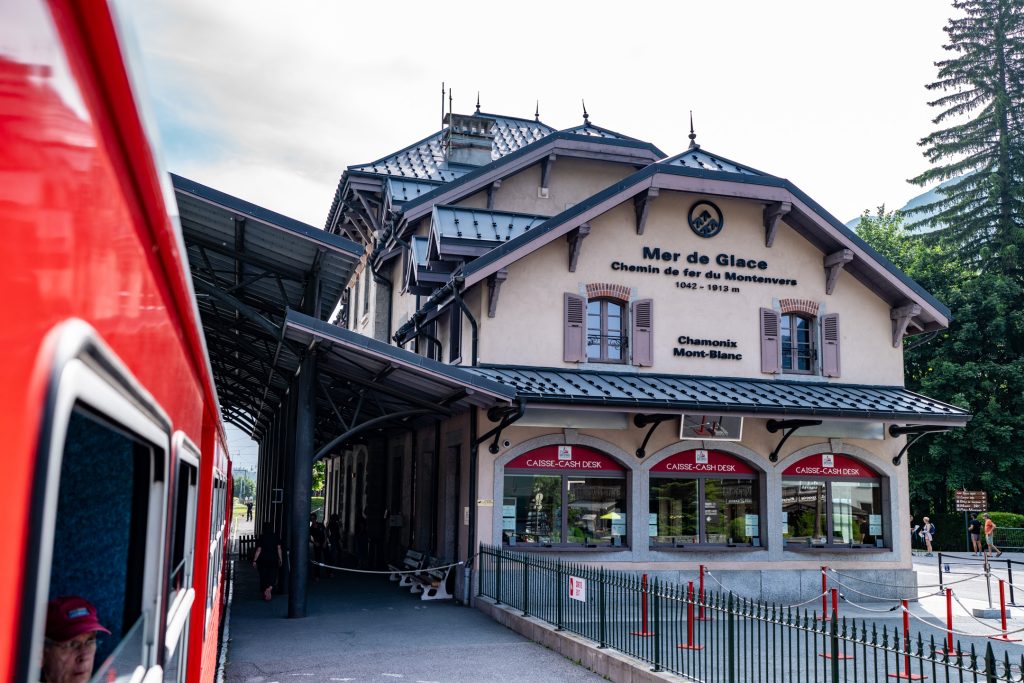
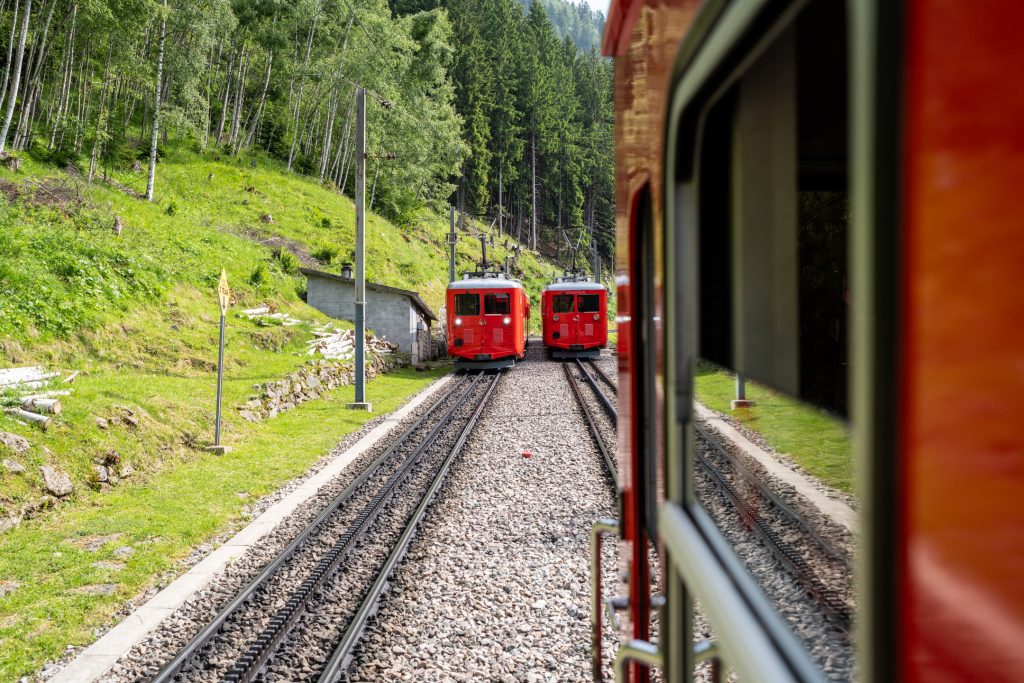
The tunnels
2 tunnels had to be drilled to allow the passage of the track:
Le Grépon, over a length of 306 m and which has the particularity of making a bend
This 350-metre tunnel with curves and ramps was dug by hand, by the light of old carbide lamps. It took several months of work to dam the furious Grépon torrent with granite blocks and build this tunnel in cut stone, 93% of which is masonry along 93% of its length. The Grépon tunnel is a real work of art!
Les Planards: over a length of 95m, located on the 1st quarter of the climb. The structure was dug by hand when the track was created in 1907.These 2 tunnels are completed by 8 covered galleries, the purpose of which is to protect against avalanches or rockfalls.
length of Le Grépon tunnel
length of Les Planards tunnel
The two viaducts
The Montenvers Viaduct, consisting of 11 arches, the construction of the Montenvers Viaduct was launched in 1907. With a length of 152m, it winds through the heart of the mountain with an S-shaped profile, with a curve of 80m radius and a counter-curve of 90m.
The Bois Viaduct is distinguished by its structure combining masonry and metal. It is composed of three masonry arches: two of 8 meters and one of 7.10 meters, extended by a metal span of 28.10 meters in length.
This configuration allows the viaducts to blend harmoniously into the alpine landscape while ensuring the necessary solidity for the passage of the train. The viaducts of the Train du Montenvers illustrate the ingenuity of the engineers of the time.
for Montenvers Viaduct
for The Bois Viaduct
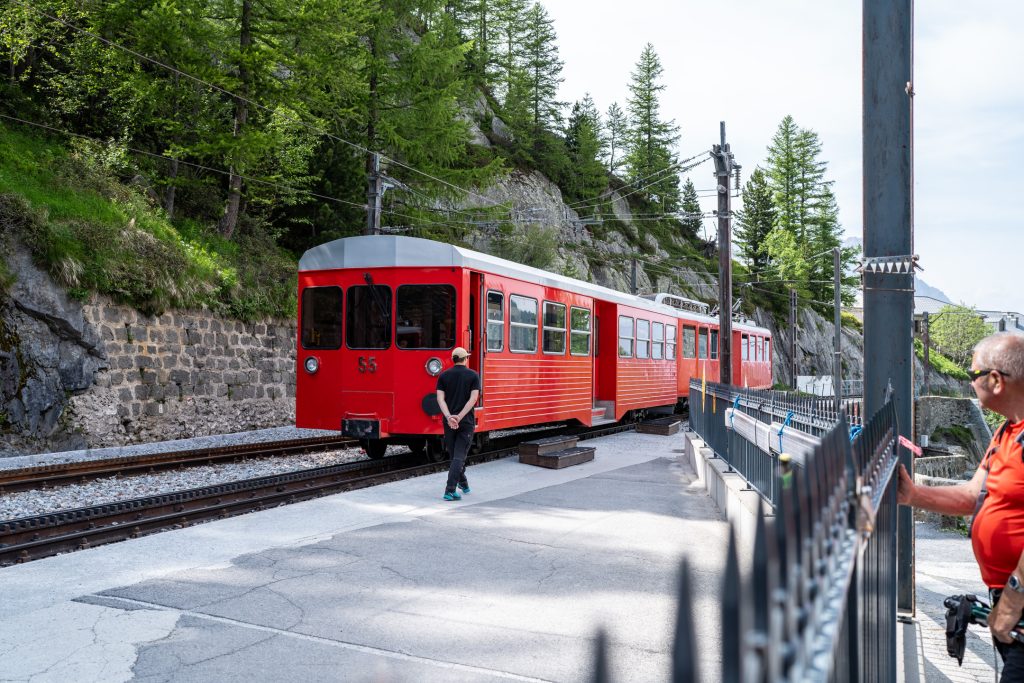
The Montenvers train
6 electric multiple units, combined with trailers, these multiple units can transport visitors all year round. Maintained with passion by the maintenance teams, these beautiful machines of more than 70 years old do not look their age!
2 diesel locomotives complete the rolling stock and are used in particular for snow removal from the track in winter, or during periods of work for the transport of materials.
450,000 people Took advantage of the train services in 2024. Most of them are used for visiting the Montenvers site and the ice cave, but the train is also used by skiers doing the Vallée Blanche, mountaineers and hikers.
The numbers, which have also become iconic, of the 6 railcars still in circulation on the track : 41-42-43-44-45-46
electric multiple units
The number of people that can be carried by a train, consisting of a wagon and a railcar
took advantage of the train services in 2024
